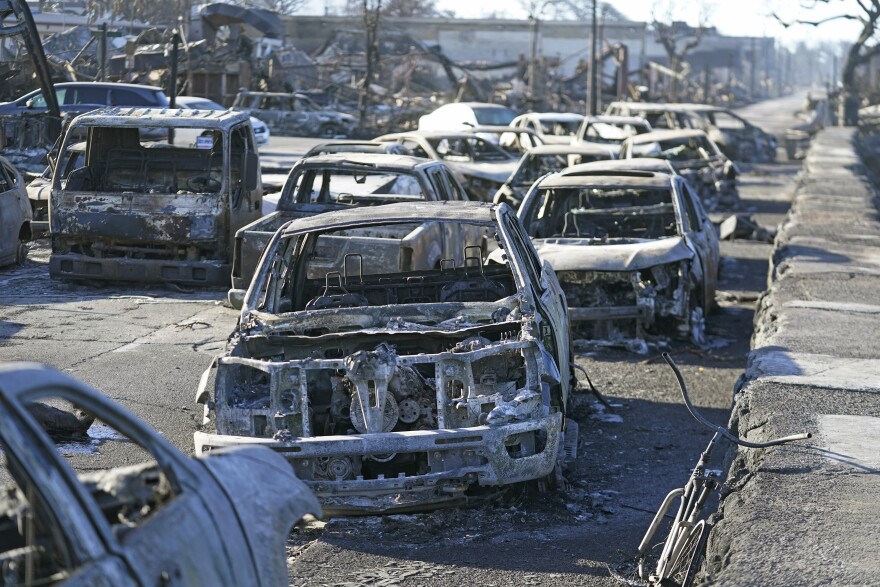Maui residents want to bury power lines, restore water and rework tourism in West Maui to better serve locals.
Those were some of the requests and demands to Maui County councilmembers during an all-day public hearing on Wednesday that involved about 100 testifiers and more observers.
Following the August wildfires on Maui, including the deadly fire that swept through Lāhainā, the council introduced a resolution that would commit to developing a “comprehensive recovery and resiliency plan” through county legislation.
On Wednesday it fielded suggestions and testimony from the public. During the hearing, Councilmember Gabe Johnson said he’s drafting a bill to get the power lines underground.
Councilmembers also suggested forming an electricity cooperative on Maui so that the utility is owned by customers rather than by Hawaiian Electric — which serves Oʻahu, Maui County and Hawaiʻi Island.
Liko Rogers, a Hawaiian immersion educator, was one of the first testifiers on Wednesday to suggest a plan to restore and fortify West Maui.
“We need responsible land management by those who own those fields of dry grass that were the root of the Lāhainā fires, we need the power lines buried underground. I understand this is expensive. Well, so is cleaning up after a fire that devastates the whole town,” he said. “We need a better emergency plan for Lāhainā to include more evacuation routes.”

Many testifiers said a resilient Maui is less dependent on tourism or involves a more sustainable form of tourism — one that provides well-paying jobs and doesn’t take away housing opportunities from residents.
Native Hawaiians and cultural practitioners said that traditional practices were sustainable and that a plan to rebuild the destroyed areas of Maui should include a similar ethos.
Kala Baybayan Tanaka, a Maui resident who practices and teaches traditional Hawaiian voyaging, was one of the testifiers on Wednesday to encourage the restoration of water to West Maui.
“We already know that we are in climate change. This is it. It’s happening. And so if we are going to prepare to be resilient, our ʻāina and our wai comes first. When you put that first everything else will fall into place,” she said.
She was also in favor of infrastructure changes like burying power lines and building evacuation routes out of West Maui.
“Our kaiāulu needs to stay here, yeah? No push them out to Olowalu or Ukumehame, where there are no resources. They need to stay here, so we need to build that infrastructure,” Tanaka said.
“Bury those lines. Brah, the money that we spend right now, no matter that expensive. Brah, we spent more just trying to right now trying to recover that. We have to change because we are dealing with this now," she said.






